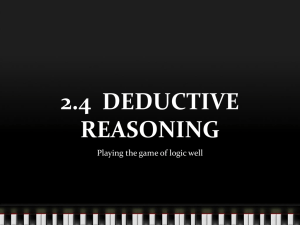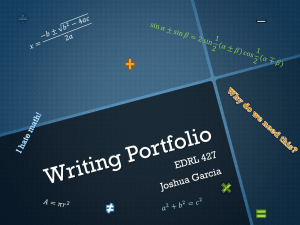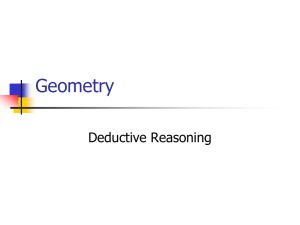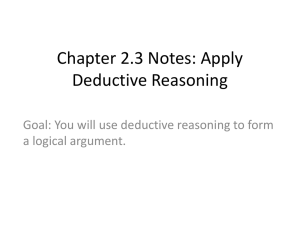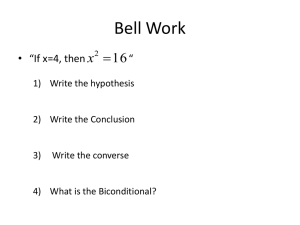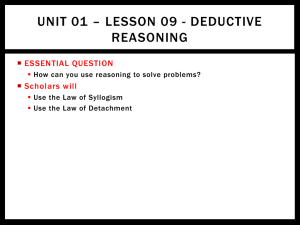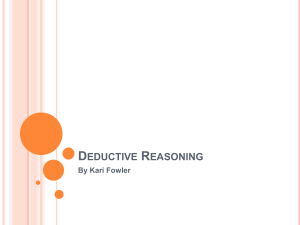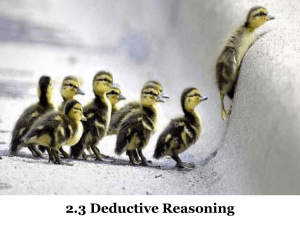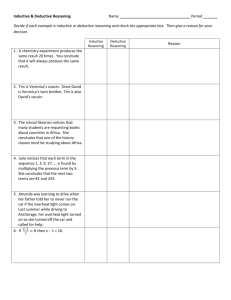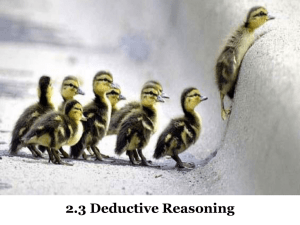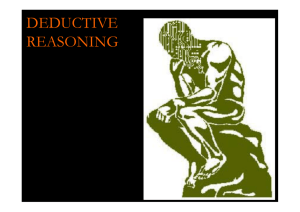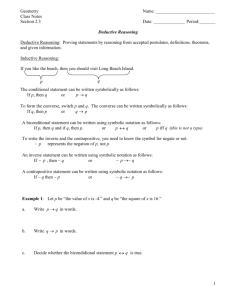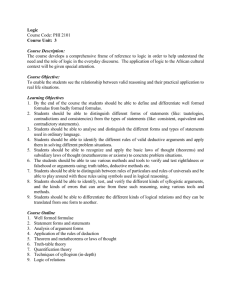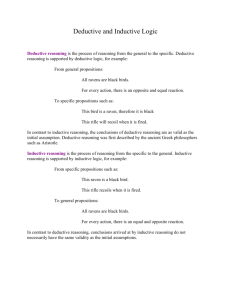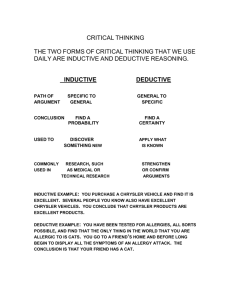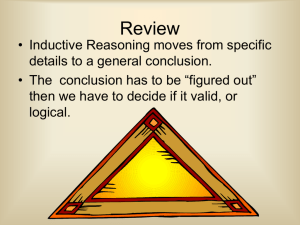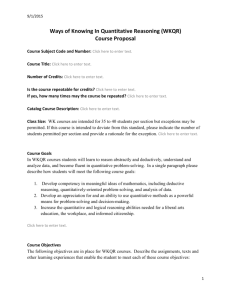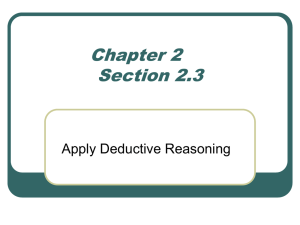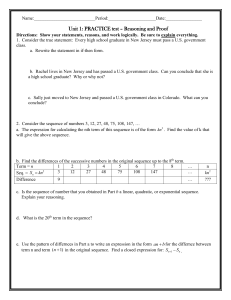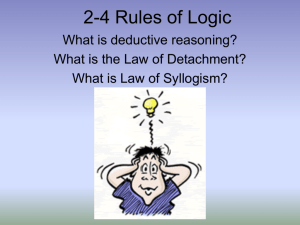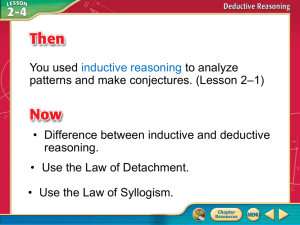2_3 - Mary Star of the Sea High School
advertisement
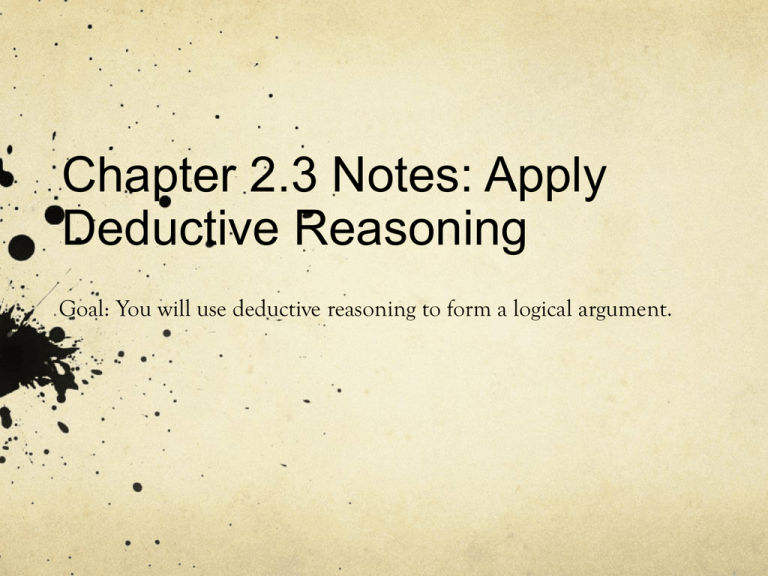
Chapter 2.3 Notes: Apply Deductive Reasoning Goal: You will use deductive reasoning to form a logical argument. Review of Conditional Statements Conditional: Converse: Inverse: Contrapositive: Write into foldable Law of Detachment: If the hypothesis is TRUE in the cond. statement, then the conclusion is also TRUE Law of Syllogism: If p q, qr (new conclusion), then pr Deductive Reasoning Deductive reasoning uses facts, definitions, accepted properties, and the laws of logic to form a logical argument. This is different from inductive reasoning, which uses specific examples and patterns to form a conjecture. Look @ your notes Laws of Logic: Use the Law of Detachment to make a valid conclusion in the true situation. Ex 1: Assuming that the following statements are true, “If Tim studies, then he passes” and “Tim studies”, what conclusion can you make? Ex 2: Assuming that the following statements are true, “If 2 lines are parallel, then they never meet” and “AB and CD are parallel”, what conclusion can you make? Look @ your notes The angle is acute invalid Look @ your notes If Jack goes to the mall, then Pam will go to If a # is a multiple of 54, then it is a multiple Look @ your notes If 2 angles are vertical, then their measures are equal. Ex.4: If possible, use the Law of Syllogism to write a new conditional statement that follows from the pair of true statements. a. If the radius of a circle is 4 ft, then the diameter is 8 ft. If the radius of a circle is 4 ft, then its area is 16π ft2. If the diameter is 8ft, then the area of the circle is 16π ft2 .b. If Joe takes Geometry this year, then he will take Algebra 2 next year. If Joe takes Algebra 2 next year, then he will graduate. If Joe takes Geometry this year, then he will graduate. c. If y3 = 8, then y = 2. If y = 2, then 3y + 4 = 10. If y3 = 8, then 3y + 4 = 10.
